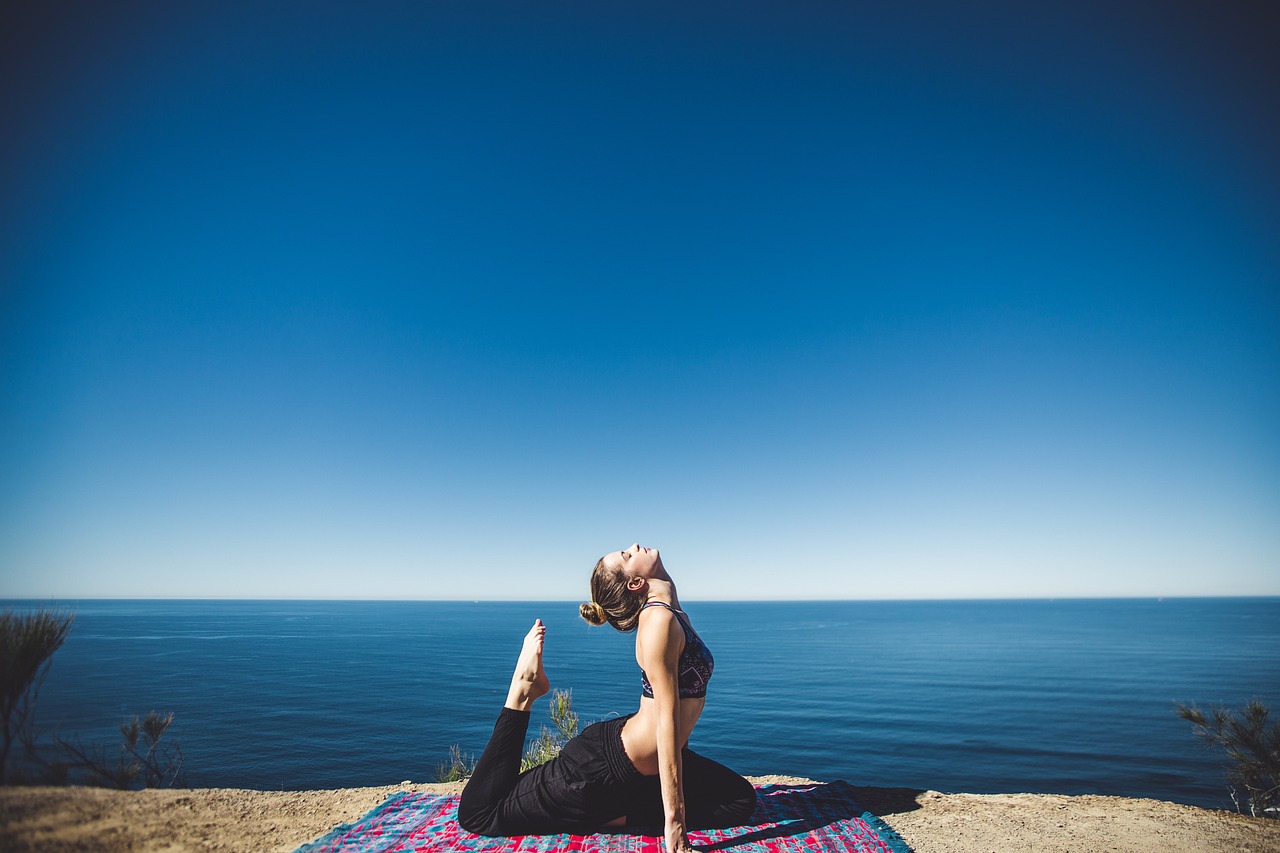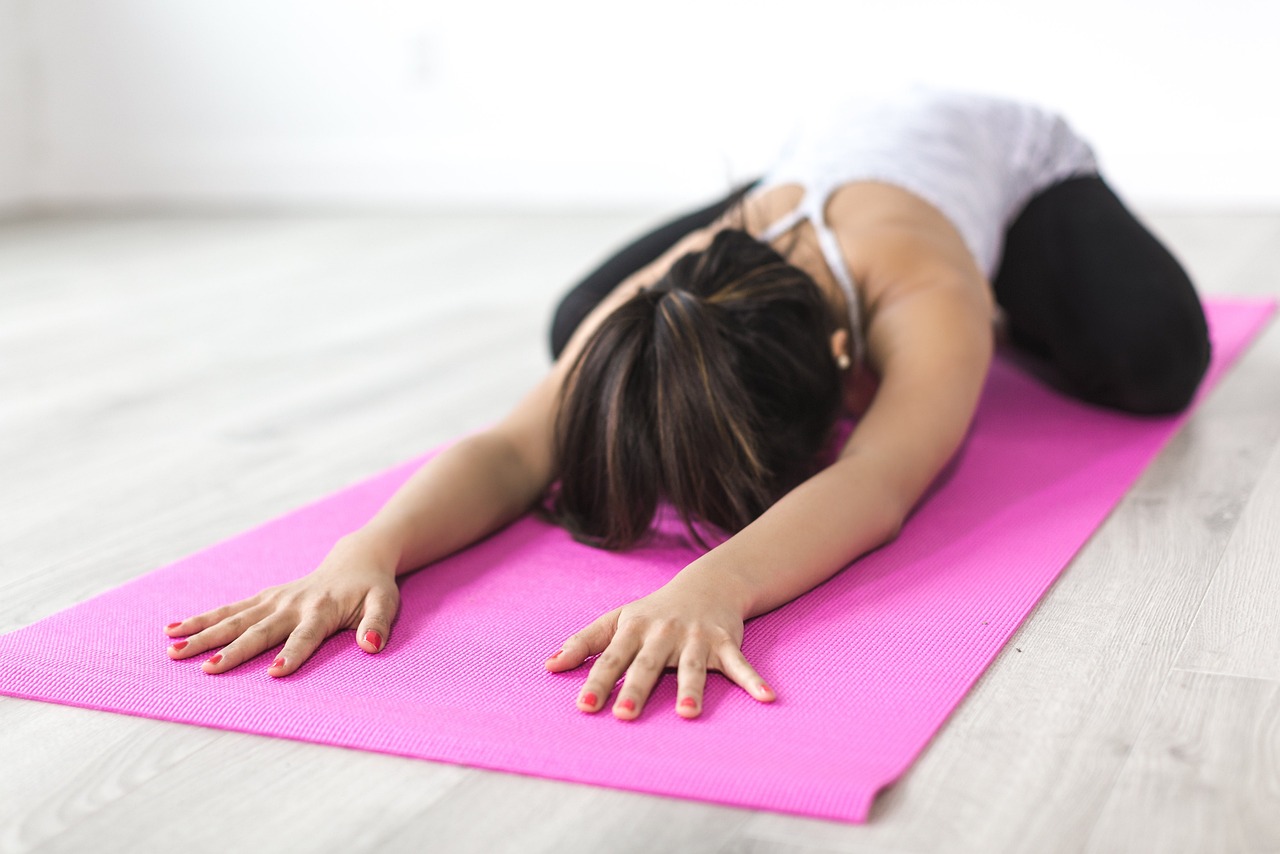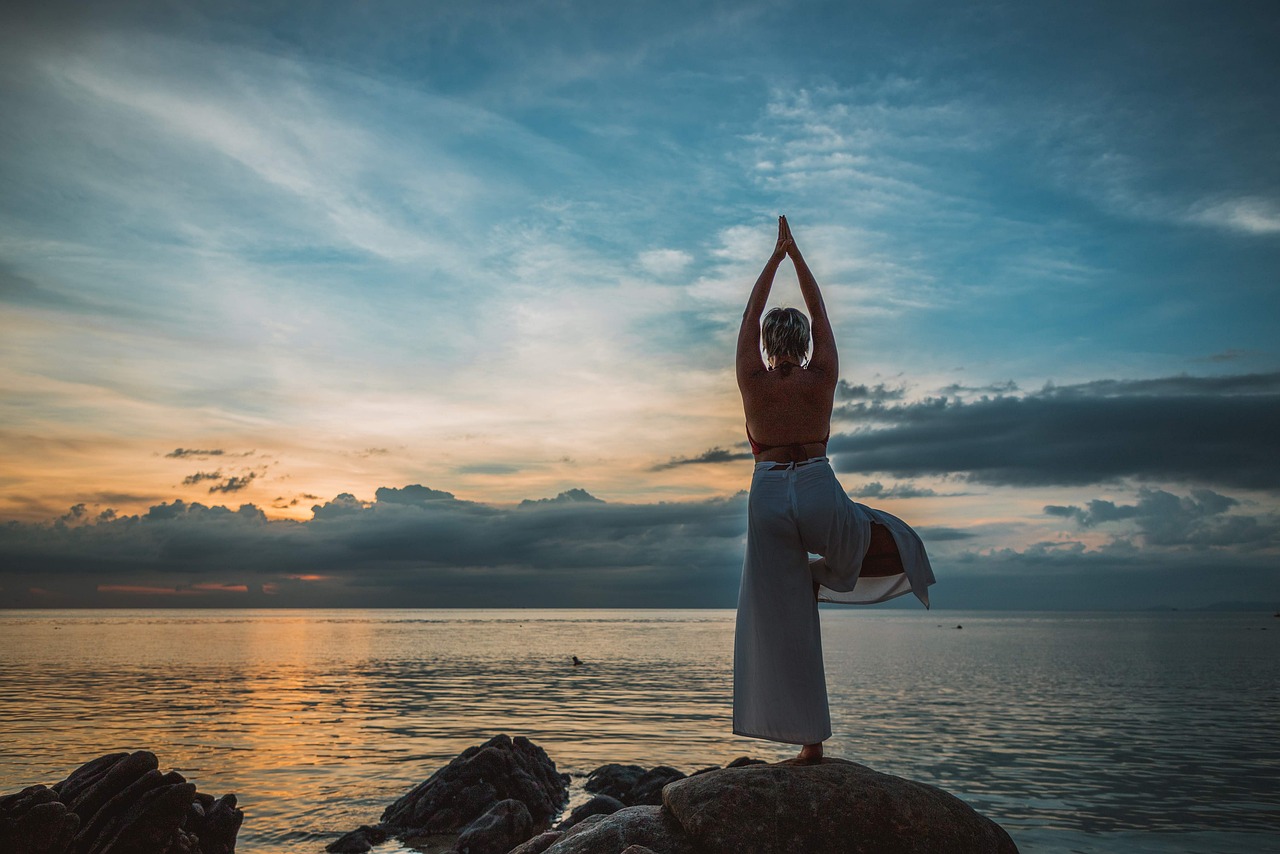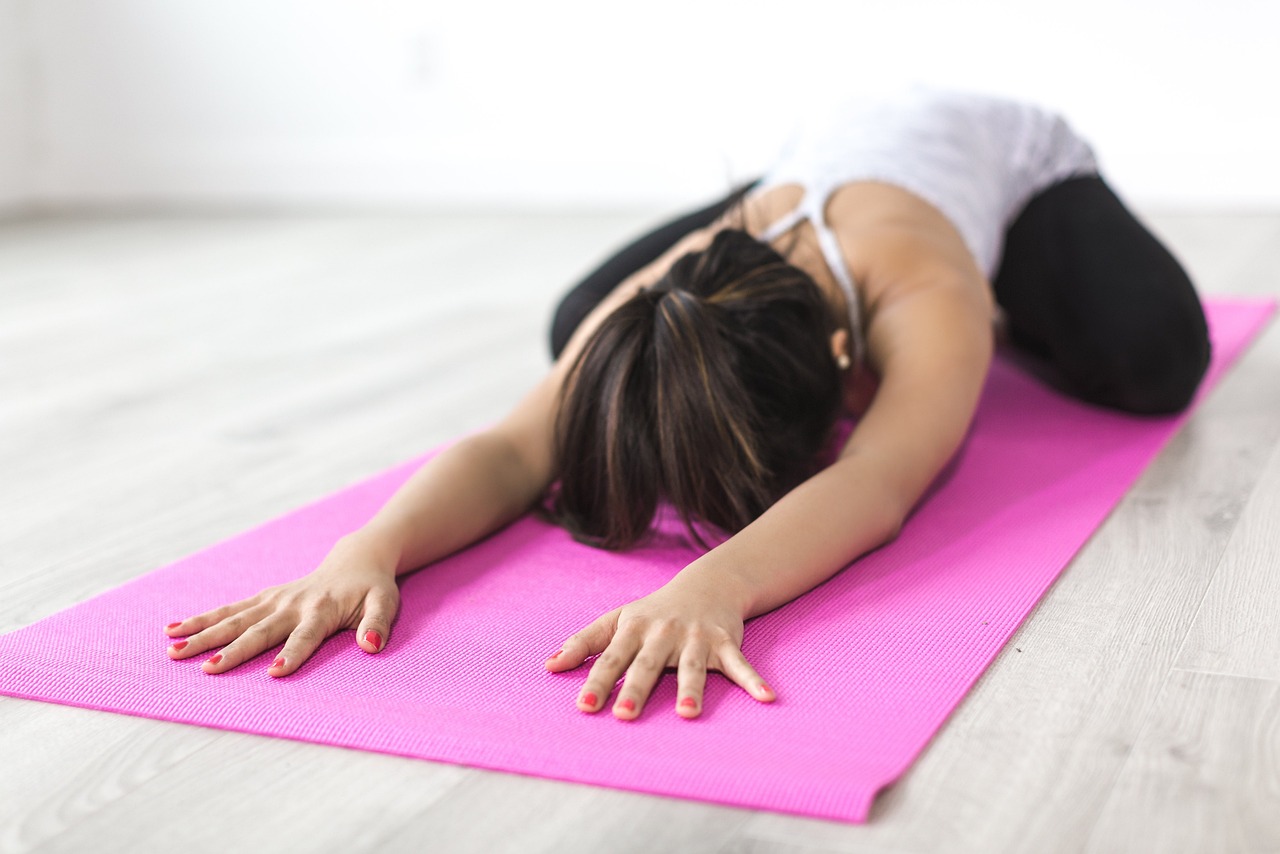As we age, our cardiovascular health becomes increasingly important. Yoga has long been touted as a practice that promotes inner peace and holistic well-being, but did you know it can also have a significant impact on heart health? In this article, we will explore the transformative power of yoga and delve into its profound benefits for seniors’ cardiovascular wellness. So, whether you’re a beginner or an experienced yogi, get ready to discover how this ancient practice can enhance your heart health and bring about a positive change in your overall well-being.

Understanding Heart Health in Seniors
The importance of heart health in seniors
As we age, it becomes increasingly important to prioritize the health of our hearts. The risk of developing cardiovascular diseases such as heart disease, high blood pressure, and stroke increases as we get older. Taking care of our hearts can significantly improve our quality of life and reduce the risk of these conditions.
Common cardiovascular issues in seniors
Seniors are more susceptible to various cardiovascular issues due to factors like age-related changes in the heart and blood vessels, sedentary lifestyles, and other existing health conditions. Some common cardiovascular issues in seniors include high blood pressure, coronary artery disease, arrhythmias, and heart failure. It is crucial for seniors to be aware of these conditions and take steps to maintain their heart health.
The benefits of yoga for heart health
Yoga has been recognized for its numerous health benefits, including its positive effects on heart health. Yoga combines physical postures, breathing exercises, and meditation, which work together to improve cardiovascular wellness. Regular yoga practice can help seniors lower blood pressure, reduce stress, improve circulation, and strengthen the heart muscle. By incorporating yoga into their lives, seniors can enhance their heart health and overall well-being.
Introduction to Yoga for Seniors
Adapting yoga for the senior population
Yoga is a versatile practice that can be adapted to suit the needs and abilities of seniors. As we age, our bodies may have limitations and mobility issues. It is important to choose yoga poses and sequences that are safe and suitable for seniors. Gentle modifications and the use of props can help make yoga accessible and enjoyable for individuals of all fitness levels.
Considerations for seniors when starting yoga
Before starting a yoga practice, seniors should consult with their healthcare professionals, especially if they have any existing health conditions. It is important to inform the yoga instructor about any physical limitations or injuries to ensure that the practice is appropriate and safe. Starting slowly and gradually increasing the intensity and duration of the practice is also crucial for seniors to avoid strain or injury.
Understanding the limitations and modifications
Seniors may have specific limitations or health conditions that require modifications in their yoga practice. For example, individuals with arthritis may need to avoid putting too much pressure on their joints, while those with back pain may need to modify certain poses. It is important to listen to the body and make adjustments accordingly. Yoga instructors experienced in working with seniors can provide guidance on modifications and offer alternatives to accommodate different abilities.

Poses and Asanas for Heart Health
Heart-opening poses for seniors
Heart-opening poses are beneficial for seniors as they help improve circulation and open up the chest, facilitating better heart health. Some heart-opening poses that can be incorporated into a yoga practice for seniors include Bridge Pose (Setu Bandha Sarvangasana), Camel Pose (Ustrasana), and Cobra Pose (Bhujangasana). These poses gently stretch the chest and shoulders, promoting better lung capacity and overall cardiovascular wellness.
Gentle backbends to enhance heart health
Backbending poses can be modified to suit the needs of seniors and can have a positive impact on heart health. Poses such as Supported Fish Pose (Matsyasana), Sphinx Pose (Salamba Bhujangasana), and Bow Pose (Dhanurasana) help to gently stretch the front of the body, open the heart, and increase circulation. These poses can be performed with the support of props, such as bolsters or blankets, to ensure comfort and safety.
Standing poses for improved cardiovascular function
Standing poses not only strengthen the legs and improve balance but also help improve cardiovascular function by increasing circulation and activating multiple muscle groups. Seniors can benefit from standing poses such as Warrior II (Virabhadrasana II), Tree Pose (Vrikshasana), and Triangle Pose (Trikonasana). These poses help improve posture, increase blood flow, and promote overall heart health.
Breathing Techniques for Cardiovascular Wellness
Benefits of deep breathing for heart health
Deep breathing exercises, also known as diaphragmatic breathing, have numerous benefits for heart health. Deep breathing helps activate the relaxation response, reducing stress and lowering blood pressure. It also improves lung capacity and oxygenates the blood, enhancing overall cardiovascular function. Seniors can practice deep breathing exercises during their yoga practice and incorporate them into their daily lives for long-term heart health benefits.
Pranayama techniques for seniors to enhance heart function
Pranayama, or yogic breathing techniques, can be an effective tool for seniors to enhance heart function and improve cardiovascular wellness. Techniques such as Alternate Nostril Breathing (Nadi Shodhana), Three-Part Breath (Deergha Swasam), and Bee’s Breath (Bhramari Pranayama) can be modified to suit the abilities of seniors. These techniques help slow down the heart rate, reduce stress, and promote overall heart health.
Incorporating breath control into yoga practice
Breath control, known as breath retention or breath awareness, can be integrated into the yoga practice of seniors to enhance cardiovascular wellness. By focusing on the breath and synchronizing it with the movements, seniors can cultivate a sense of calm and mindfulness while also improving lung capacity and oxygenation. Breath control techniques can be introduced gradually, allowing seniors to build their practice over time and experience the benefits.

Building Strength and Endurance
Chair yoga exercises for seniors with limited mobility
Chair yoga is a gentle form of yoga that can be performed while seated or using a chair for support. It is an ideal option for seniors with limited mobility or those who are recovering from injuries. Chair yoga exercises can help seniors build strength, improve flexibility, and enhance cardiovascular endurance. These exercises often incorporate gentle movements, stretches, and breathwork, making them accessible and safe for seniors.
Low-impact poses to improve cardiovascular endurance
Low-impact poses are suitable for seniors who want to improve their cardiovascular endurance without putting excessive strain on their joints or muscles. Poses such as Mountain Pose (Tadasana), Half Moon Pose (Ardha Chandrasana), and Warrior I (Virabhadrasana I) can be performed at a slower pace with a focus on proper alignment and breath control. These poses help seniors improve balance, build stamina, and strengthen the heart.
Developing core strength for a healthy heart
A strong core is essential for maintaining proper posture, stability, and overall heart health. Seniors can incorporate poses and exercises that target the core muscles into their yoga practice to build strength and support their cardiovascular wellness. Plank Pose (Phalakasana), Boat Pose (Navasana), and Cat-Cow Pose (Marjaryasana-Bitilasana) are a few examples of poses that engage the core muscles and promote a healthy heart.
Yoga for Stress Reduction
The link between stress and heart health
Chronic stress has a detrimental impact on heart health, increasing the risk of heart disease and other cardiovascular issues. By reducing stress levels, seniors can improve their heart health and overall well-being. Yoga offers a holistic approach to stress reduction, combining physical movement, breathwork, and meditation to promote relaxation, lower cortisol levels, and enhance cardiovascular wellness.
Restorative yoga poses to reduce stress in seniors
Restorative yoga focuses on deep relaxation and stress reduction, making it an excellent choice for seniors who want to unwind and promote heart health. Poses such as Supported Child’s Pose (Balasana), Legs-Up-The-Wall Pose (Viparita Karani), and Corpse Pose (Savasana) are particularly beneficial for stress reduction. These poses help activate the parasympathetic nervous system, eliciting the relaxation response and reducing stress levels in the body.
Meditation and mindfulness techniques to promote cardiovascular wellness
Meditation and mindfulness techniques provide seniors with tools to manage stress, cultivate clarity, and improve heart health. Meditation involves focusing the mind and eliminating distracting thoughts, while mindfulness is about being fully present in the moment. These practices help seniors reduce anxiety, improve mental well-being, and positively impact the cardiovascular system. Incorporating meditation and mindfulness into their daily routine can significantly benefit seniors’ heart health.
Incorporating Yoga into Daily Life
Creating a safe and comfortable yoga space
To incorporate yoga into daily life, it is essential to create a safe and comfortable space dedicated to practice. Seniors can designate a specific area in their home for yoga, free from distractions and with sufficient space for movement. A yoga mat, props like blocks and bolsters, and any necessary equipment should be easily accessible. Creating a calm and inviting environment sets the stage for a regular and enjoyable yoga practice.
Establishing a regular yoga routine
Consistency is key when it comes to reaping the benefits of yoga for heart health. Seniors should aim to establish a regular yoga routine that suits their individual needs and lifestyle. Setting aside a specific time each day or designating certain days for yoga practice helps seniors prioritize their health and make yoga a regular part of their routine. Start with shorter sessions and gradually increase the duration as comfort and stamina improve.
Making yoga a part of daily activities
In addition to dedicated yoga practice, seniors can incorporate yogic principles and techniques into their daily activities to enhance heart health. Bringing mindfulness to daily actions, such as paying attention to posture and practicing deep breathing during everyday tasks, can have a positive impact on cardiovascular wellness. Simple stretches or standing poses can also be incorporated during breaks or while performing household chores.
Precautions and Safety Measures
Consulting with a healthcare professional before starting yoga
Before starting a yoga practice, seniors should consult with their healthcare professional, especially if they have any existing health conditions or concerns. A healthcare provider can provide guidance on whether yoga is suitable and safe for an individual’s specific situation. They can also provide any necessary modifications or precautions to ensure that the yoga practice aligns with the senior’s overall health goals.
Adapting yoga practice based on individual health conditions
Each senior may have unique health conditions or concerns that require adaptations in their yoga practice. For example, individuals with osteoporosis may need to avoid certain poses that put excessive pressure on the bones, while those with balance issues may require additional support or modifications. It is important for seniors to listen to their bodies and modify their practice accordingly, in consultation with their healthcare professional and experienced yoga instructors.
Preventing injuries during yoga practice
Safety should always be a top priority when practicing yoga, especially for seniors. Seniors should take precautions to prevent injuries by practicing within their comfort zone, maintaining proper alignment, and avoiding overexertion. It is important to use props and modifications as needed, especially for individuals with limited mobility or joint issues. Additionally, seniors should stay hydrated, warm up before each practice, and inform their yoga instructor of any pain or discomfort experienced during the practice.
Supportive Props and Equipment
Using props to enhance yoga practice
Props can be valuable tools for seniors to enhance their yoga practice and ensure safety and comfort. Props like blocks, bolsters, straps, and blankets can provide support and help seniors modify poses according to their needs and abilities. For example, seated poses can be made more accessible and comfortable by using a chair or cushion for additional support. Props allow seniors to experience the benefits of yoga while minimizing strain or discomfort.
Recommended props for seniors practicing yoga
When practicing yoga, seniors may find certain props particularly useful. Blocks can be used to bring the ground closer and provide stability in standing poses. Bolsters or blankets can be used for added support in restorative poses. Straps can help seniors gradually increase flexibility and reach in certain poses. It is important to choose props that suit individual needs and consult with experienced yoga instructors for recommendations on prop usage.
Modifications and variations for different abilities
Yoga is a practice that can be modified and tailored to individual abilities. Seniors with different levels of flexibility, strength, or mobility can find variations of poses that suit their body. For example, wall-supported poses can offer stability for individuals with balance issues, and seated variations can be performed for those who are unable to perform standing poses. Skilled yoga instructors can guide seniors in adapting poses to their individual needs while still reaping the benefits of the practice.
The Power of Community and Social Connection
Joining senior-friendly yoga classes
Seniors who are interested in practicing yoga can benefit greatly from joining senior-friendly yoga classes. These classes are specifically designed to cater to the unique needs and abilities of seniors. Practicing in a supportive group environment encourages social interaction, fosters a sense of belonging, and provides opportunities for connection with like-minded individuals. Senior-friendly classes often have instructors who are experienced in teaching yoga to seniors and can provide tailored guidance and assistance.
Benefits of practicing yoga in a supportive group
Practicing yoga in a supportive group setting offers numerous advantages for seniors. The camaraderie and encouragement from fellow participants can boost motivation and enjoyment, making regular yoga practice more likely. Group classes also provide opportunities for seniors to learn from others, share experiences, and build friendships. The collective energy and positive atmosphere in a supportive group can enhance the overall well-being and heart health of seniors.
Connecting with like-minded individuals for overall well-being
Engaging in yoga provides an opportunity for seniors to connect with like-minded individuals who share a common interest in holistic well-being. Through yoga classes, workshops, or online communities, seniors can find a sense of belonging and expand their social network. Building relationships with others who are also focused on improving their heart health and overall wellness can provide support, motivation, and a sense of community, ultimately benefiting seniors’ heart health and emotional well-being.
In conclusion, understanding heart health in seniors is crucial in order to prioritize cardiovascular wellness. Yoga offers a holistic approach to maintaining and improving heart health, providing numerous benefits for seniors. By incorporating yoga into their lives, seniors can practice heart-opening poses, develop a regular yoga routine, improve cardiovascular endurance, reduce stress, and join supportive yoga communities. It is important for seniors to consult with healthcare professionals, adapt their practice based on individual limitations, and practice safety precautions to ensure a safe and enjoyable yoga journey. With the right adaptations, modifications, and support, yoga can enhance the heart health and overall well-being of seniors, empowering them to lead healthier and more fulfilling lives.
